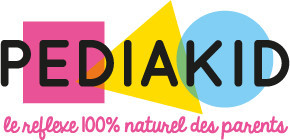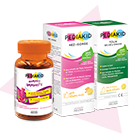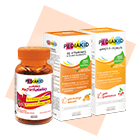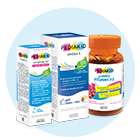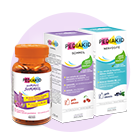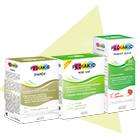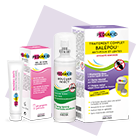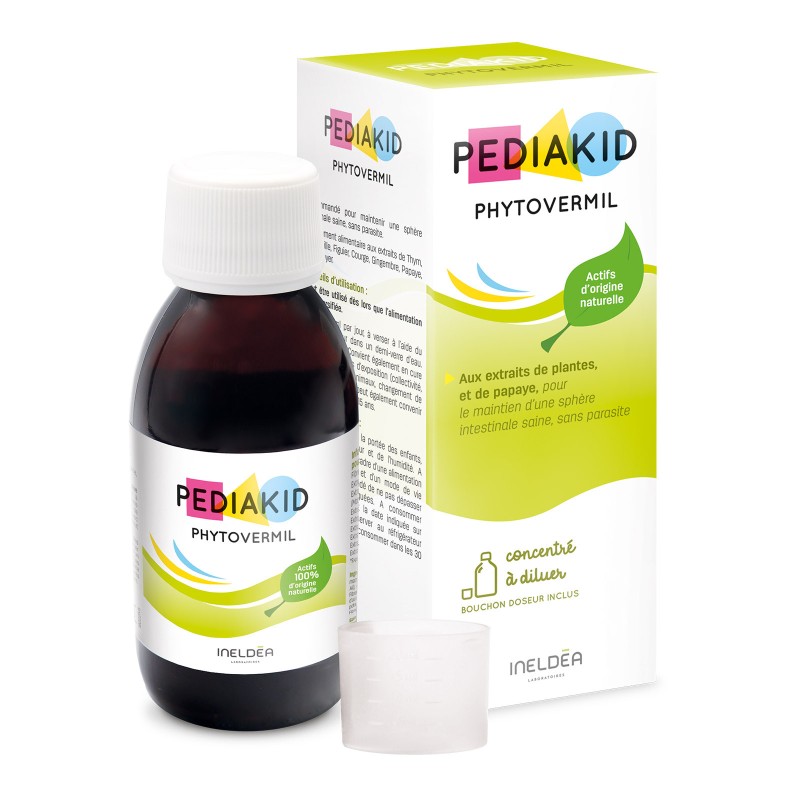
With each change of season, they return... We're talking about intestinal parasites !
- today mars 16, 2023
Intestinal parasites affect children in particular. It is important for parents to prevent their invasion, to diagnose their presence and to find solution to eliminate them. Below is an overview of the main intestinal parasites likely to colonise your child’s intestines. What are they? Where do they come from? How do you get rid of them?
What are intestinal parasites ?
Intestinal parasites are small animals which live by making use of another animal. External parasites are animals with which we are very familiar: fleas, mosquitoes or ticks for example. As for internal parasites, these include protozoans (single-cell animals), arthropods (such as scabies) and helminths which are worms.
Intestinal parasites can be worms, such as tapeworm or the oxyurida, or protozoans such as giardia (which causes giardiasis). These small organisms lodge in the intestines of children where they find their food and reproduce.
Intestinal parasites do not necessarily cause infection and sometimes there are no symptoms. Bad sanitary conditions and unclean water encourage the growth of intestinal parasites. Nevertheless, they are found everywhere in the world, including in the cleanest areas.
Oxyurida
The oxyurida are the most common intestinal worms. These thin, white worms live in the rectum. At night, they slip out and lay their eggs around the orifice. The eggs can live on up to two weeks on the skin outside the body and spread onto pyjamas, sheets and nappies.
The oxyurida are extremely unpleasant as they result in severe itching but do not cause any disease.
WHERE DO OXYURIDA COME FROM ?
The oxyurida reproduce very easily as their eggs are extremely resistant. When a child scratches, it is not aware that the eggs accumulate under the finger nails and will be transferred each time there is contact with another child. Moreover, the child ingests the eggs each time he or she puts their hands in the mouth.
The eggs are so resistant that they can even survive on objects and can be indirectly transferred when a child is in contact with this object: toys, sheets, toilet seat, etc.
The oxyurida prefer children to adults and thrive in areas where children congregate, such as nurseries and schools.
HOW TO RECOGNISE THE OXYURIDA ?
The most evident symptoms of oxyurida are itching which leads to the child scratching the anus incessantly. This becomes worse at night due to the migration of intestinal worms towards the exterior.
In adults, intestinal worms measure several millimetres. You can see specimens on the child’s skin, bedding, nappy or in the toilet bowl.
To confirm the presence of oxyurida, the doctor will generally ask you to take a sample. You will be asked to stick an adhesive strip around the anus then to pull it off. The doctor will send the adhesive strip for microscopy to confirm the presence of eggs.
HOW TO ELIMINATE OXYURIDA ?
Oxyurida are eliminated with the aid of oral treatment prescribed by your doctor. This starts to take effect within two weeks but itching may persist beyond that time, for another two to three weeks. If you have several children, it is absolutely essential to treat them as well.
PEDIAKID PHYTOVERMIL contributes to maintaining a healthy intestinal space. Its gentle formula based on plant extracts and papaya contributes to intestinal health. Preventive treatment at each change of season is recommended to avoid any new contamination.
Giardia
Giardia is an intestinal parasite found in water and which is caught by drinking contaminated water, for example water from a lake, river or stream but also from highly frequented water such as swimming pools.
Giardia is also found in spaces with poor hygiene where pipes are dilapidated and sealed. Finally, the parasite is also found in faecal waste from children.
Giardia is transmitted from person to person (it affects children in particular) but also through contaminated food or contact with infected water. In a dirty environment, touching the mouth with the hands is an aggravating factor which helps the transmission of the parasite.
HOW TO RECOGNISE GIARDIA ?
Giardia is found in the stool. The doctor therefore tests faeces. Giardia is not visible to the naked eye.
Children develop symptoms of varying degrees of severity. These include:
- soft stool
- diarrhoea
- stomach cramps
- bloating
- constant fatigue
- weight loss
- nausea.
In the case of persistent diarrhoea, you should consult a paediatrician quickly. If the infection develops, severe diarrhoea can lead to your child becoming dehydrated.
When you notice these types of symptoms, this means the intestinal parasites have been around for a couple of weeks.
HOW TO TREAT GIARDIASIS ?
Giardiasis requires oral treatment which results in elimination of the parasite. On average, it takes one and a half months to completely clear the body of intestinal parasites.
Tapeworm, taenia or tenia
Taenia is an intestinal parasite that develops in the intestine This hermaphrodite which consists of rectangular segments is remarkable because it can measure up to 10 metres in length. Contrary to the two specimens described above, it likes children and adults in equal measure.
Taenia uses a host to colonise the human body. It is found, in particular, in undercooked beef and pork. Its eggs adhere to the muscles of animals and, when the meat is eaten, they attach to the walls of your intestine and feed on what you eat which allows them to grow.
HOW TO RECOGNISE TAPEWORM ?
Taenia segments can be seen in the stool but also in underwear, sheets and toilet bowls.
The symptoms are as follows :
- appetite problems
- weight loss
- abdominal pain
- chronic fatigue
- headaches.
Taenia is diagnosed from a stool test.
TREATMENT OF TAENIA
Taenia is treated with a dewormer (of the PEDIAKID PHYTOVERMIL type) which helps maintain a healthy, parasite-free intestinal space. It is then expelled in the stool.
In all cases, good hygiene is the best defence against all these intestinal parasites. Teach your child to wash his or her hands regularly, to try not to touch the mouth with the hands and to only drink the right kind of water.

